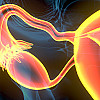Recent Blog Articles

Lead poisoning: What parents should know and do

How does waiting on prostate cancer treatment affect survival?

Does running cause arthritis?

Is alcohol and weight loss surgery a risky combination?

Preventing ovarian cancer: Should women consider removing fallopian tubes?

Healthier planet, healthier people

Is snuff really safer than smoking?

Will miscarriage care remain available?

Considering collagen drinks and supplements?

Does less TV time lower your risk for dementia?
Polychondritis
What Is It?
Polychondritis, also called relapsing polychondritis, is a rare disease in which cartilage in many areas of the body becomes inflamed. The disease most commonly affects the ears, nose and the airways of the lungs.
The cause is not known, and it occurs most often in people in their 50s or 60s. A leading theory is that polychondritis is an autoimmune disease, in which the immune system attacks the body rather than foreign invaders such as viruses. In polychondritis, it's possible that a triggering event, perhaps an infection, sets off a reaction by the immune system, which unleashes an attack on the body's cartilage.
Some people may have a genetic makeup that makes them more prone to this. The disease does not seem to run in families. It sometimes appears in people who have other disease, such as rheumatoid arthritis, vasculitis (inflammation of blood vessels) and systemic lupus erythematosus (SLE or lupus).
Symptoms
Polychondritis is a systemic (body-wide) illness. Common symptoms include:
- Fatigue or malaise
- Fever
- Red, swollen, painful (inflamed) ears, hearing loss, dizziness
- Ears that are "floppy," that is, they are softer than normal, limp or droopy
- Inflammation over the bridge of the nose, nasal congestion
- Arthritis
- Shortness of breath, cough, stridor (high-pitched sound during breathing)
- More rarely: eye inflammation, leaky heart valves, kidney disease, neurological problems, rash
Diagnosis
The diagnosis may be delayed, since early symptoms can be similar to symptoms of other conditions that are much more common than polychondritis. A biopsy of an inflamed area may be required to confirm the diagnosis. In a biopsy, a small piece of tissue is removed and examined under a microscope. The biopsy also is helpful to rule out other causes of symptoms such as infection, especially tuberculosis, syphilis, leprosy and fungal disease. Sometimes, the biopsy is not conclusive, or the doctor is certain enough of the diagnosis that a biopsy does not have to be done.
No single blood test will give a definite diagnosis, including tests for antibodies to cartilage. Imaging studies, including a computed tomography (CT) scan of the lungs and other tests, especially pulmonary-function tests, may be performed to help determine the extent of disease.
Criteria for diagnosis have been developed by experts on the disease to standardize the definition of the disease. Patients may be diagnosed with polychondritis when compatible symptoms are present (see below) and especially when a biopsy supports the diagnosis. Typical symptoms include:
- Inflammation of the cartilage in both ears(excluding the soft lower earlobe)
- Arthritis of multiple joints, although X-rays usually do not show joint damage
- Inflammation of the cartilage over the bridge of the nose
- Eye inflammation
- Inflammation of the cartilage in the trachea or throat
A certain type of hearing loss (called neurosensory hearing loss), ringing in the ears (tinnitus) and/or a sensation of spinning (vertigo)
Some criteria include improvement in cartilage inflammation after treatment with steroids or other treatments for polychondritis.
Expected Duration
Polychondritis is a chronic (long-lasting) disease, although medications frequently can reduce the severity of symptoms. Sometimes, the disease goes into spontaneous remission, meaning it goes away temporarily, whether or not the person is treated. In most cases, remission is the result of receiving effective medication.
Prevention
Because the cause is unknown, there is no way to prevent polychondritis. Complications can be prevented with appropriate medical attention. For example, if there is severe inflammation of the windpipe (trachea), a tracheal stent, a small tube that keeps the airway open, can be inserted until medications are able to control the disease.
Treatment
Because the disease is so rare, studies to determine the single best treatment are difficult to do. As a result, there is no clear ideal therapy for this disease. Treatment depends on what parts of the body are affected and how severely.
For more minor disease, such as arthritis or rash, nonsteroidal anti-inflammatory drugs (NSAIDs), analgesics, dapsone or corticosteroids may be appropriate. For more severe disease immunosuppressive medications are prescribed, often in combination with NSAIDs and/or steroids. Immunosuppressive medications include methotrexate (Folex, Rheumatrex), leflunomide (Arava), azathioprine (Imuran), mycophenolate mofetil (Cellcept), cyclophosphamide (Cytoxan, Neosar) and cyclosporine (Neoral, Sandimmune).
Other options for treatment include infliximab (Remicade), adalimumab (Humira), etanercept (Enbrel), anakinra (Kineret), abatacept (Orencia), rituximab (Rituxan), tofacitinib (Xeljanz) and tocilizumab (Actemra). However, the role of these agents in treating polychondritis remains uncertain.
Tracheal surgery or stenting and treatment of any accompanying infection also are options to be considered in some cases. Surgery to repair an injured part of the trachea is a major operation. Increasingly, however, doctors use a procedure called bronchoscopy, in which they use a flexible tube to look down the throat and into the trachea, and insert a small plastic tube called a stent to keep the airway open.
When the person also has an infection, such as pneumonia or bronchitis, antibiotic therapy can be lifesaving.
When To Call A Professional
If you have the symptoms of polychondritis, especially if you have difficulty breathing, contact your health care professional.
Prognosis
The outlook for people with polychondritis is highly variable. People with active disease involving the airways may die prematurely. However, milder disease or disease that responds rapidly to treatment may have an excellent prognosis.
Most recent studies suggest that although many patients have some impairment such as hearing loss, visual problems or breathing problems, the disease in many patients is chronic but tolerable.
Additional Info
National Organization for Rare Disorders (NORD)
https://www.rarediseases.org/
American College of Rheumatology
https://www.rheumatology.org/
Disclaimer:
As a service to our readers, Harvard Health Publishing provides access to our library of archived content. Please note the date of last review or update on all articles.
No content on this site, regardless of date, should ever be used as a substitute for direct medical advice from your doctor or other qualified clinician.
Free Healthbeat Signup
Get the latest in health news delivered to your inbox!
